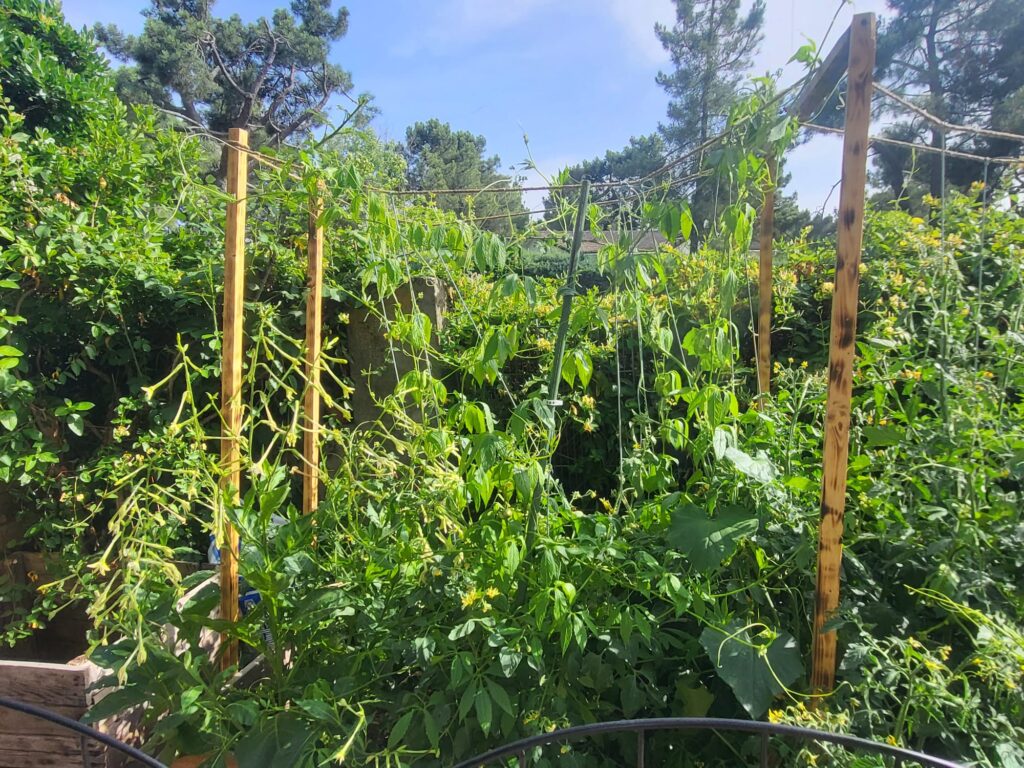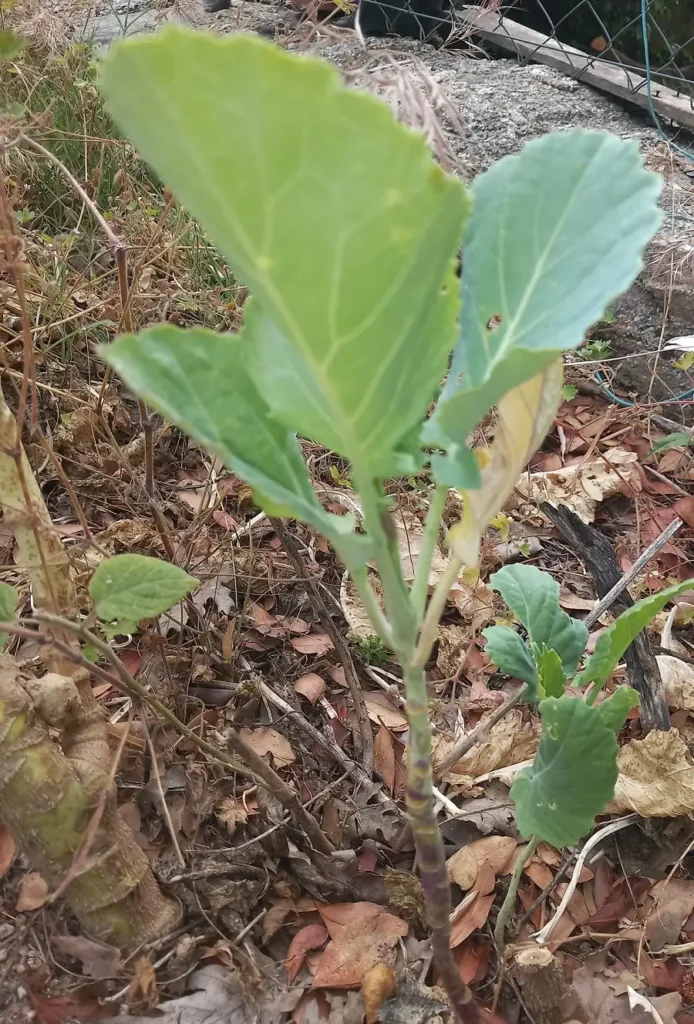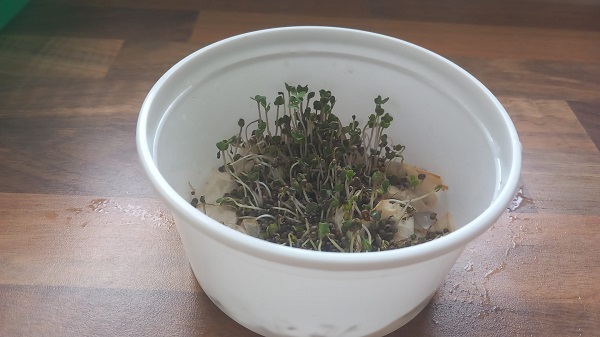Caigua, also known as korila, achocha or Andean cucumber, is a climbing plant that is surprising for its rapid growth and its hollow fruits, light and versatile in the kitchen. Native to the Andes, this species has been cultivated for centuries for its food value and health benefits. Although little known in many urban gardens, caigua adapts very well to home cultivation thanks to its resistance, ease of handling and the fact that it needs little more than a large pot, a tutor and sun.
This makes it an ideal choice if you want to try something new and different on your terrace, balcony or garden. In addition to bringing an exotic and green touch to your space, it will reward you with edible pods that you can consume fresh, stuffed or cooked. Today we tell you everything you need to know to grow it step by step.

Moderate and constant irrigation. Keep the substrate slightly moist without puddling. Increase the frequency in dry periods.

Direct sun or bright semi-shade, at least 5-6 h of light per day.

Dripper / Careful manual irrigation.

Very easy to grow, ideal for beginners.

It prefers temperatures between 18 °C and 28 °C. It does not tolerate frost or sustained temperatures below 10 °C.

By means of seeds.
Care for Caigua
Soil Requirements
Caigua grows best in loose, deep and well-drained soils. It prefers temperate climates with some humidity, without waterlogging and with good air circulation. The ideal pH for its cultivation is between 6.0 and 7.0.
Soil Preparation
Although it can grow in poor soils, caigua produces best in soils enriched with organic matter. Before planting, it is advisable to prepare the soil with mature compost or worm castings. If growing in pots, use a universal substrate mixed with coconut fiber or perlite to improve aeration and moisture retention without compaction.
Light Requirements
This plant needs at least 5 to 6 hours a day of direct sunlight or very intense light if in semi-shade. In very hot climates, it may benefit from some shade in the central hours of the day, as it does not tolerate extreme heat well.
Irrigation
Caigua requires regular watering, keeping the substrate constantly moist but not waterlogged. It is sensitive to prolonged drought, especially during flowering and fruit formation. If the soil dries out too much, production will be affected.
Irrigation Methods
Drip or manual irrigation is recommended, taking care not to over-wet the foliage to prevent diseases. In pots, it is important to control drainage and adapt the frequency of watering to sun exposure and ambient temperature.
Seedling Care
After germination, keep the seedlings in a temperate environment with good indirect light until they develop at least two pairs of true leaves. At that time, you can transplant them to their final location, preferably next to a stake or climbing structure. Be sure to keep the humidity without excesses so that the root system can establish itself correctly.
Pest Protection
Although caigua is a hardy, vigorous-growing plant, it can be affected by some common orchard pests, especially in hot climates or if crop rotation is not practiced. Among the most frequent are aphids, whiteflies and thrips.
As we have already talked about aphids and whiteflies in other posts, such as the one on microtomates, this time we will focus on a less known but equally harmful pest: thrips.
Trips
Thrips (Thysanoptera) are tiny elongated light brown, black or yellowish insects, difficult to see with the naked eye. Their damage stems largely from their behavior, as they scrape the surface of leaves, buds or flowers to feed, causing silvery spots, deformations, dry edges and, in more severe cases, premature flower or fruit drop. In young caiguas, a thrips infestation can slow initial growth, while in adult plants it can damage flowers and prevent good fruiting.

This pest appears in dry and warm environments, especially if the plant suffers water stress or is weakened. Therefore, maintaining a good environmental humidity and regular irrigation without waterlogging is key to prevent its appearance. It is also advisable to intersperse crops with chives, garlic or basil, as their aromatic compounds naturally repel them.
If the presence of thrips has already been detected, it is best to act gently but effectively. In these cases we can apply chamomile extract, which has a repellent and soothing effect on the plant, a safe method for pollinators and respectful with the ecosystem.
In addition, encouraging the presence of natural predators is a very effective and environmentally friendly strategy, the most effective in eliminating this pest are lacewings or the flower bug. An easy and common way to attract these allies, which we always recommend, is to plant flowers such as marigolds, dill or coriander in bloom, which offer them shelter and alternative food. Remember that a biodiverse and balanced environment will always be the best natural defense system against pests.
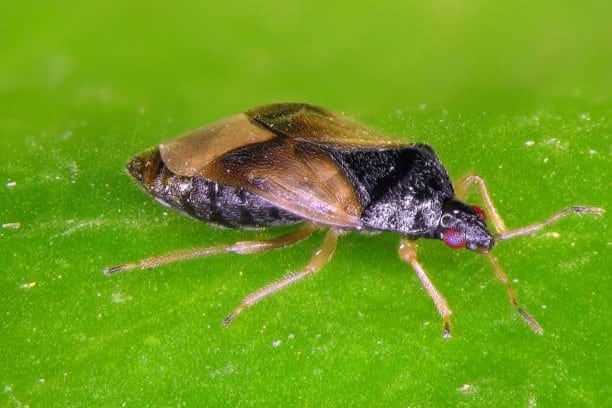
How to Reproduce Caigua
Seed Reproduction
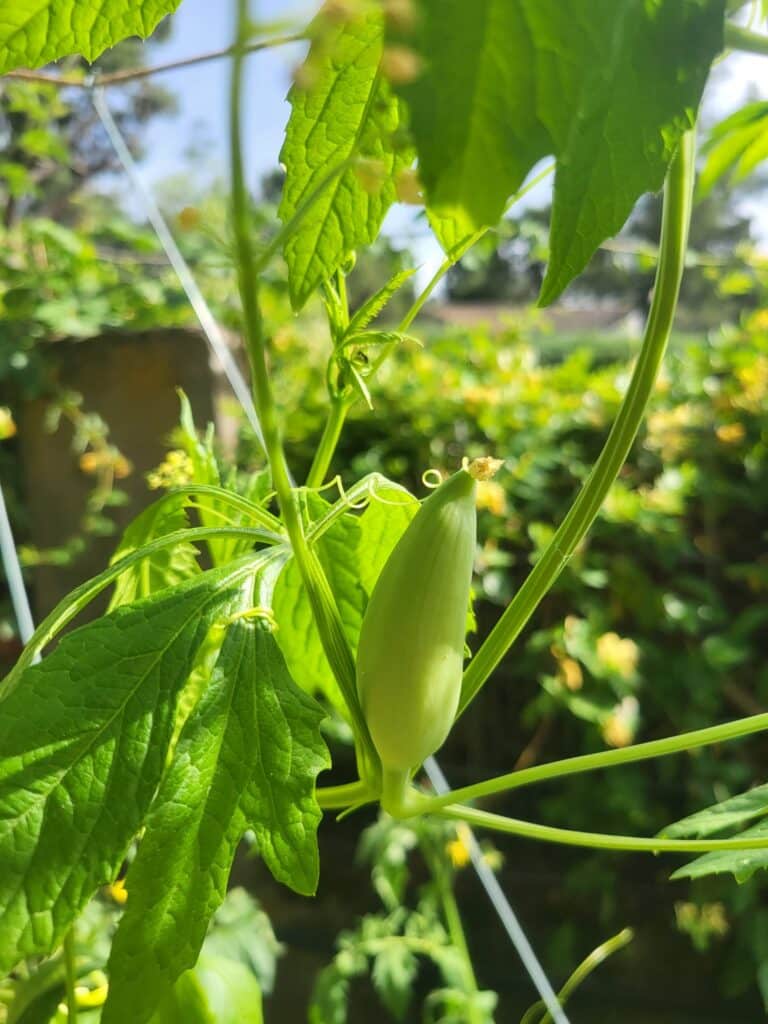
The caigua is a plant that reproduces easily by seeds, each mature fruit contains between 8 and 20 large, dark and flat seeds, depending on the size of the specimen and the growing conditions. To collect them, it is important to wait until the fruit is completely ripe, moment that we will notice when it acquires a yellowish or orange color, begins to soften and, in some cases, even opens by itself.
Once the seeds have been extracted, it is time to wash them with warm water to remove the pulp or mucilage that covers them. Then they are left to dry on absorbent paper in a cool and ventilated place for at least a week. When they are completely dry, we can store them in a paper envelope or glass jar tightly closed, labeled with the date.
Sowing and germination
Caigua is a tropical climbing plant that needs temperate temperatures and a certain humidity to germinate properly. Ideally, we start its cultivation in spring, when the risk of frost has passed and night temperatures remain above 15 °C. In temperate climates, we recommend sowing from late March to May, but if you live in a cold area, you can sow earlier and do it indoors or in a protected seedbed, and then transplant outdoors when conditions improve.
At the time of preparing the seedbed we can use small pots, trays of alveoli or individual seedbeds, once selected we will fill these with a loose substrate rich in organic matter, which is well moistened before starting to sow. Then, we will place one seed per container, about 2 or 3 cm deep, with the flatter side down and cover with a thin layer of substrate pressing lightly.
In optimal conditions, with a temperature between 20 and 28ºC, good clarity and keeping the substrate humid without flooding, our seeds will germinate in approximately 7 to 14 days. Remember that the germination time is estimated, because it can vary and take longer if the temperature is low or the seed is too buried.
Transplant
When transplanting our caigua seedlings to their final location, we must wait until they have developed at least 2 or 3 true leaves and reach a height of 10 to 15 cm. If you have planted several, select the most vigorous and healthy ones to ensure better development.
When we start germination indoors or in a protected seedbed , it is essential to acclimatize the plants to the outside gradually. To do this, place them outdoors in the mornings and return to shelter in the afternoon or evening for several days. Gradually increase the daily exposure time until they can remain outside permanently, once they have adapted to the conditions of the environment.
Uses of Caigua
Culinary Uses
The caigua fruit is highly appreciated in traditional Andean cuisine and is increasingly valued in other parts of the world for its soft texture, delicate flavor and nutritional properties. It is mainly consumed when it is still tender and green, when it is juicier and easier to cook.
One of the most common ways to prepare it is stuffed. As it is shaped like a hollow pod, the seeds are removed and it can be stuffed with meat, rice, vegetables, cheese or vegan mixtures, and then baked or steamed. It can also be consumed in stews, soups and stir-fries, cut into slices or strips, providing a light texture reminiscent of cucumber.
In some regions, it is even consumed raw in salads, well washed and thinly sliced, ideal for those who enjoy fresh and slightly herbaceous flavors. In addition, thanks to its low caloric content and high water and fiber content, it is an ideal food for light and healthy diets.
Associations
Caigua is a fast-growing climbing plant that appreciates vertical space to expand. Like all cucurbits, it can be somewhat nutrient demanding, so it is important to plan its location to avoid unnecessary competition and favor beneficial associations.
| Compatibilities | Incompatibilities |
|---|---|
| Corn (serves as a natural tutor and provides light shade) | Squashes and zucchini (compete for space and nutrients) |
| Beans or broad beans (provide nitrogen to the soil) | Fennel (as in other crops, it inhibits its development). |
| Onion and Garlic (serve as pest repellents) | Cucumbers (very similar in requirements, favor cross-diseases) |
| Spinach and chard (shallow roots, do not compete with the caigua). | Melon or watermelon (too much competition for water and space) |
Now that you know a little more about caigua, here are some products that can help you when growing it in your garden:
🌱 Caigua Seeds
Grow this Andean climbing plant and obtain light, healthy fruits, perfect for stuffing.
👉 View on Amazon🎋 Tutors Plants
Essential for directing growth. Keeps plants upright, improves aeration and facilitates harvesting.
👉 View on Amazon
